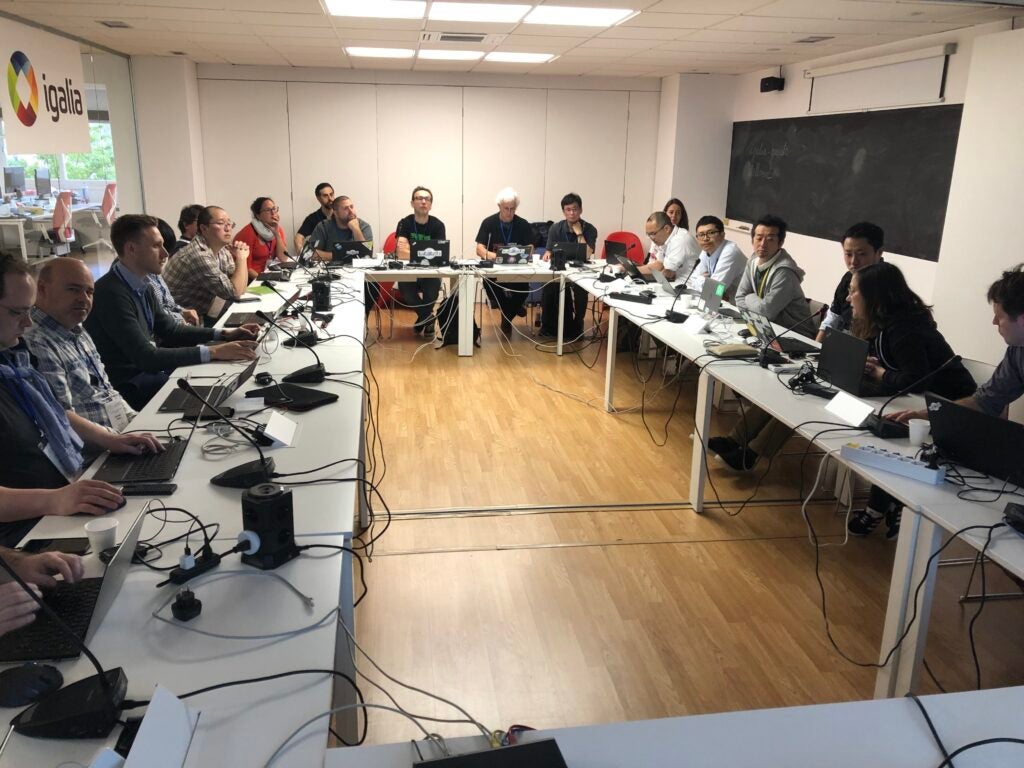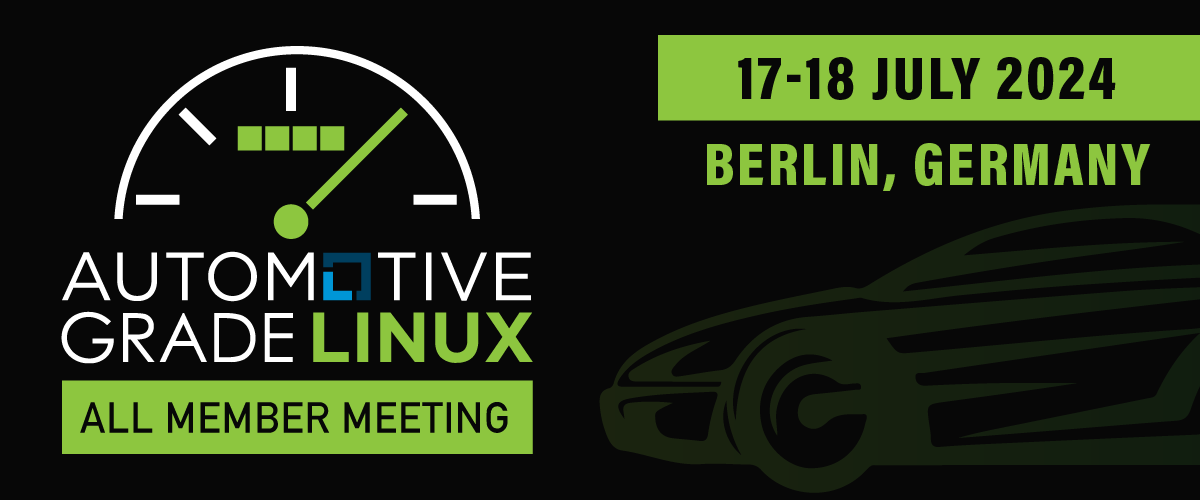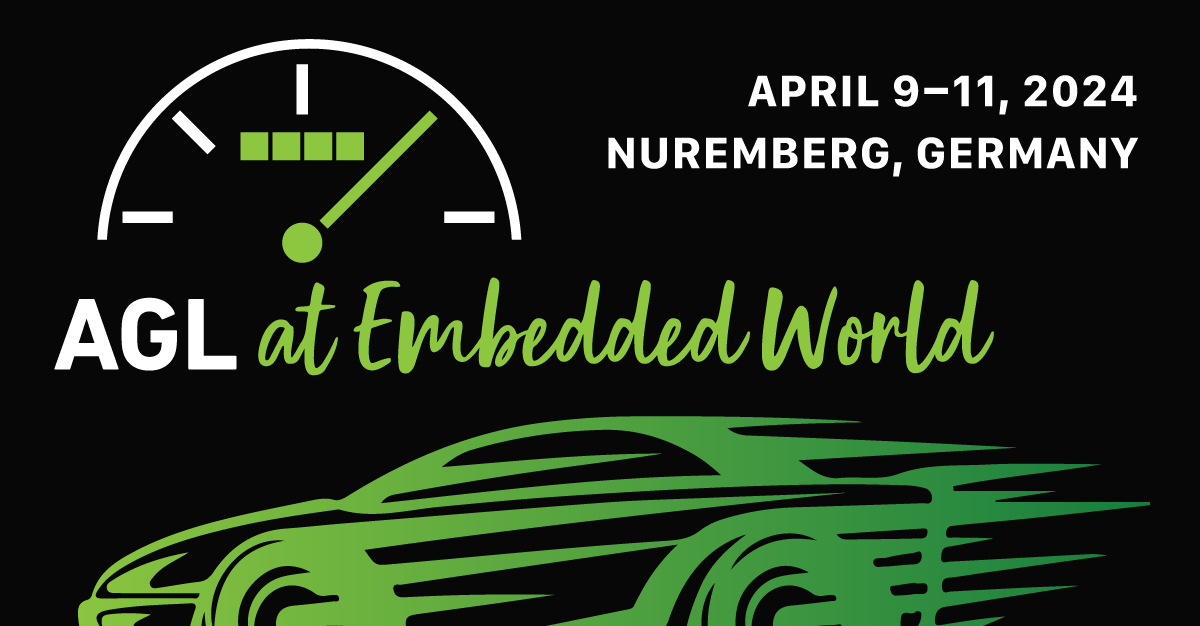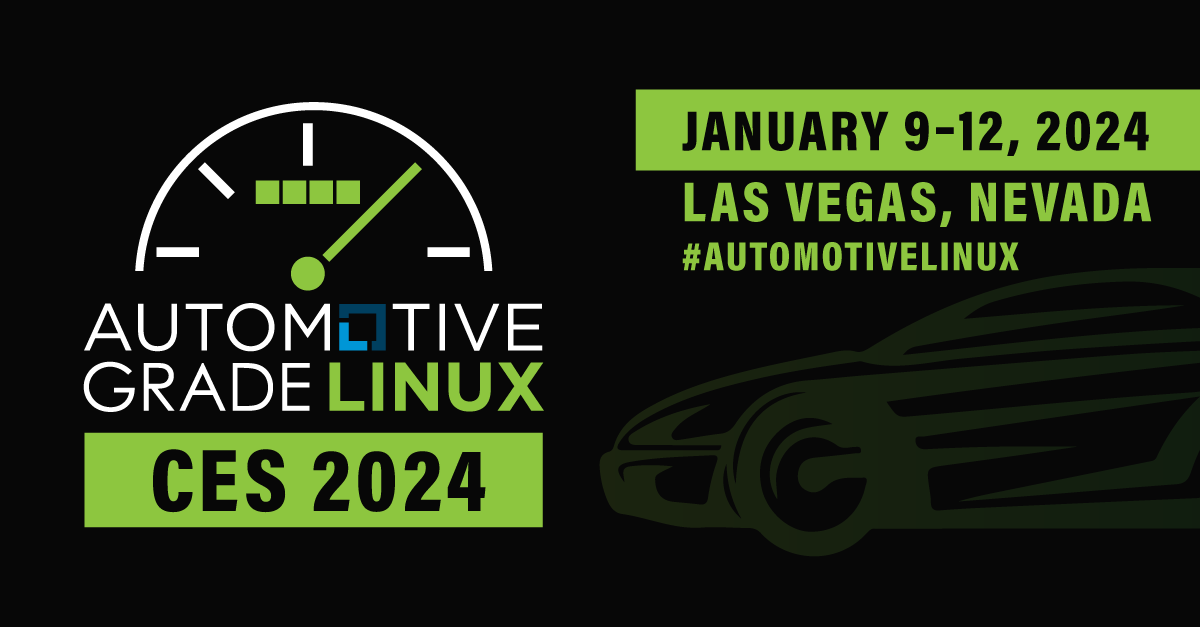By Daniel Stone and George Kiagiadakis, Collabora
Following on from the Automotive Grade Linux All Member Meeting (AMM), hosted in Tokyo at the beginning of March, members of the graphics and multimedia working groups regrouped in A Coruña, Spain, for focused discussion and work around these important topics. With Galicia notoriously the coolest and wettest part of Spain, the weather encouraged us to focus our efforts on the discussion indoors and not look longingly out to the beach.
During the AMM, George Kiagiadakis from Collabora presented his work on replacing the AGL 4A audio system with PipeWire, the upstream Linux replacement for systems like PulseAudio and JACK. The decision was taken to go forward with PipeWire as AGL’s future audio framework, pending further development of policy management. In Spain, George described PipeWire’s architecture, and how he envisions incorporating AGL’s special requirements, including integration with its security framework and complex audio networks. Michael Fabry from Microchip provided detailed explanations of how car audio networks are laid out in production vehicles, whilst Fulup ar Foll from IoT.bzh provided more background on security requirements. The discussion then moved on to evaluating how the existing 4A topology and policy configuration could be implemented within PipeWire.

More than 30 AGL developers gathered for a face-to-face meeting in A Coruña, Spain, in early May.
Red Hat’s Wim Taymans — the original author of PipeWire, whose presence was invaluable — was heavily involved in these design discussions. Another topic of interest was implementation of the voice-recognition input channel, which has additional requirements to safeguard use privacy. We also made significant progress there, drafting a design which can be implemented easily whilst satisfying those requirements. Finally, we set timelines for these features to be developed and integrated into the AGL Unified Code Base, and spent the rest of the time doing development.
Daniel Stone from Collabora also led a follow-on session from the AMM, a detailed requirements, design, and scheduling discussion around the compositor used to show all graphical content on screen. Replacing AGL’s existing multi-process compositor architecture allows us to not only have a streamlined and more efficient design, but also offers OEMs more flexibility in implementing and differentiating their HMI user interfaces. The compositor — based on the Weston compositor primarily developed by Collabora — has been designed from the ground up for traceability and reliability, providing assurance that the interface will always be responsive to the user and to safety-critical events.
After these discussions, we have good grounds to continue with our development of these changes in the graphics and audio subsystems. We are planning to show these as part of the AGL showcase at CES in early January, integrating them into the AGL UCB for the Itchy Icefish release and beyond. These developments will help drive AGL towards production readiness, offering capability as well as reliability.
You can read more about the Face-to-Face meeting and view some of the presentations here.




